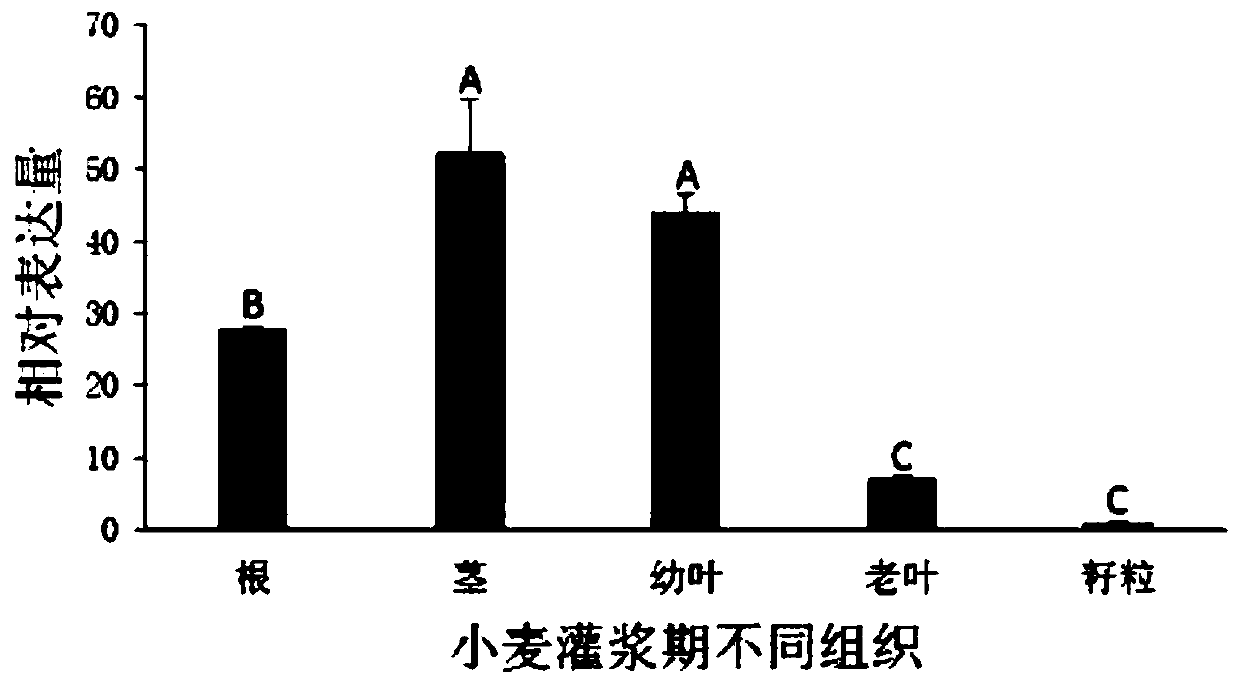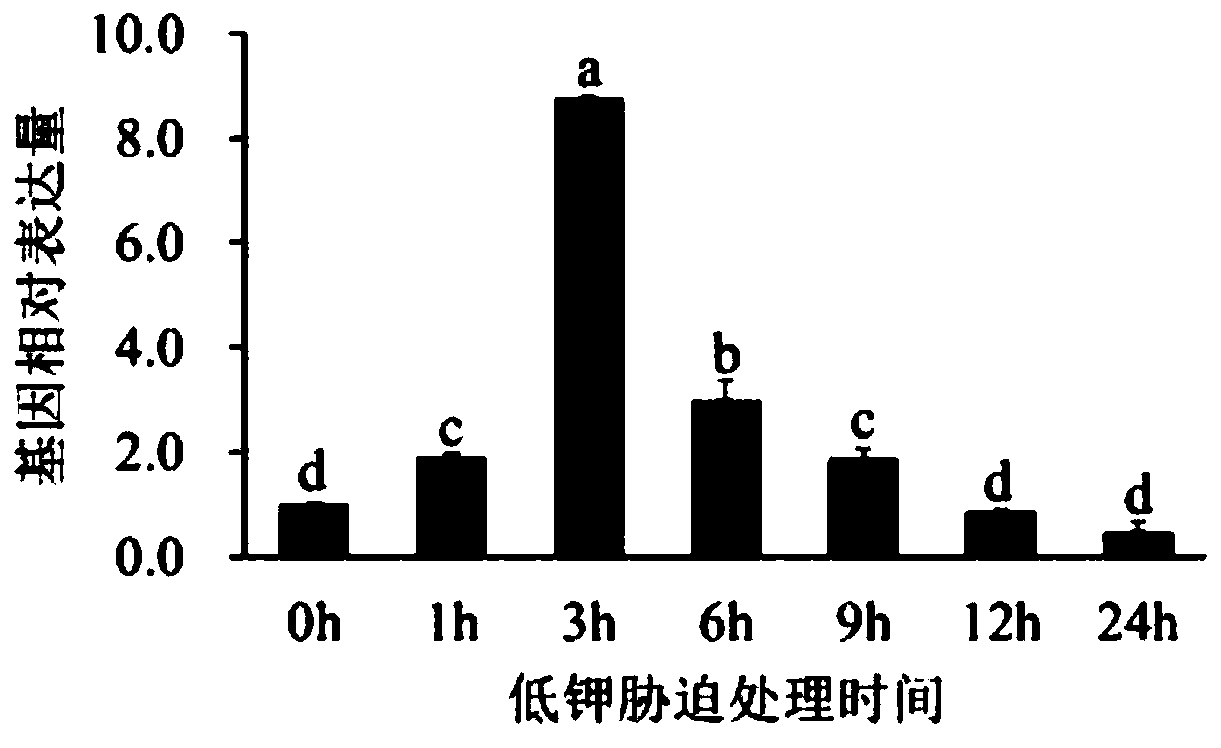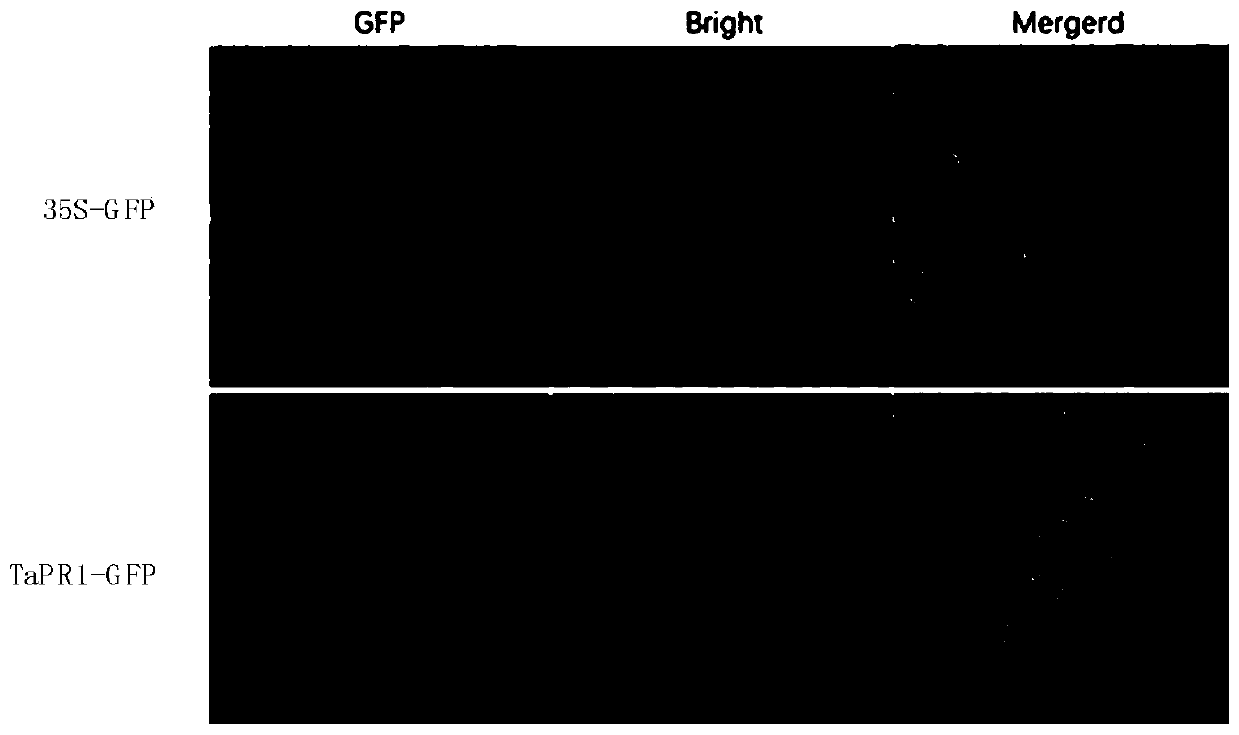Low kalium resisting associated protein TaPR1 and coding protein and application thereof
A low-potassium and protein-resistant technology, applied in the fields of application, genetic engineering, plant genetic improvement, etc., can solve the problems of inability to maintain soil potassium and other nutrients, reduce fertilizer utilization rate, and unbalanced potassium content in farmland, etc.
- Summary
- Abstract
- Description
- Claims
- Application Information
AI Technical Summary
Problems solved by technology
Method used
Image
Examples
Embodiment 1
[0055] Cloning of embodiment 1, TaPR1
[0056] 1. Cloning of TaPR1
[0057] The roots of common wheat (Triticum aestivum L.) (variety Aikang 58) grown in hydroponics for about 5 days were taken from the roots of the three-leaf stage seedlings, quickly frozen in liquid nitrogen, and stored at -80°C for later use.
[0058] The total RNA of wheat seedling roots was extracted by Trizol method (TransGEN Biotech), and cDNA was synthesized by PrimerScriptTM RT reagent Kit with gDNAEraser kit (TaKaRa).
[0059] Amplification system (20μL):
[0060]
[0061]
[0062] Reaction procedure:
[0063]
[0064] PCR products were detected by 1.0% agarose gel electrophoresis.
[0065] The gene shown in Sequence 2 in the Sequence Listing is named TaPR1 gene, wherein its coding gene is the nucleotides at positions 80-2218 at the 5' end of Sequence 2 in the Sequence Listing, and the protein encoded by the gene is named TaPR1 protein, the amino acid sequence of the protein is sequence ...
Embodiment 2
[0067] Example 2, real-time fluorescent quantitative PCR analysis of the expression characteristics of TaPR1
[0068] 1. Wheat material processing
[0069] a. At the wheat filling stage, take the wheat roots, stems, young leaves, old leaves and grains grown in the field, put them into liquid nitrogen for quick freezing, and store them at -80°C for later use.
[0070] B, to the wheat seedling of three-leaf stage, carry out following processing:
[0071] (1) Low-potassium treatment: place wheat seedlings in culture solution with a concentration of 0.1 mM potassium ions, and culture them under light for 1 hour, 3 hours, 6 hours, 9 hours, 12 hours, and 24 hours. Quick-frozen and stored at -80°C for later use.
[0072] (2) Treatment of the control: The roots of wheat seedlings without any treatment were directly frozen at -80° C. as a control.
[0073] 2. Extraction of RNA
[0074] Total RNA was extracted from wheat roots, stems, young leaves, old leaves and grains grown in fie...
Embodiment 3
[0091] Example 3, TaPR1 subcellular localization analysis
[0092] 1. Construct 35S-GFP vector:
[0093] A primer pair (TaPR1-1F and TaPR1-1R) was designed according to the sequence of the TaPR1 gene, and BamHI and SalI restriction sites were introduced at the ends of the primers respectively.
[0094] TaPR1-1F: 5'-CGC GGATCC ATGGATCTCGAGGCGGCAGCT-3';
[0095] TaPR1-1R: 5'-ACGC GTC GAC AACCTTGTACAACATGCCG-3'.
[0096] The target gene PCR product and 35S-GFP expression vector were double-digested with Thermo Fisher enzymes BamHI and SalI, respectively.
[0097] The double enzyme digestion system (20μL) is as follows:
[0098]
[0099] Use a PCR machine to incubate at 37°C for 70 minutes, and inactivate the enzyme according to the requirements of the instructions for subsequent experiments.
[0100] Gel recovery was performed on the double-digested products, and TAKARA T4 ligase was used for ligation. The molar ratio of the target fragment:carrier was 10:1.
[0101] ...
PUM
 Login to View More
Login to View More Abstract
Description
Claims
Application Information
 Login to View More
Login to View More - R&D
- Intellectual Property
- Life Sciences
- Materials
- Tech Scout
- Unparalleled Data Quality
- Higher Quality Content
- 60% Fewer Hallucinations
Browse by: Latest US Patents, China's latest patents, Technical Efficacy Thesaurus, Application Domain, Technology Topic, Popular Technical Reports.
© 2025 PatSnap. All rights reserved.Legal|Privacy policy|Modern Slavery Act Transparency Statement|Sitemap|About US| Contact US: help@patsnap.com



